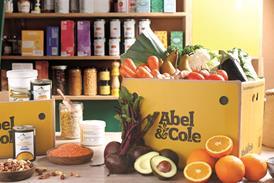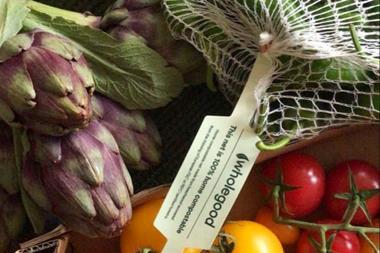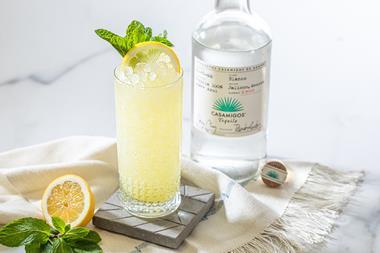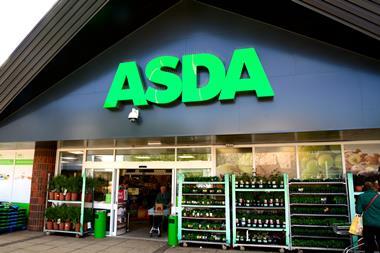Chile boasts the perfect climate in which to grow ‘happy’ grapes, making it a paradise for the country’s winemakers
Chile is often described as a winemaker’s paradise and it’s not difficult to see why. Protected by the borders of the Andes, the Atacama desert and the Pacific and Antarctic oceans, the country is free from pests, boasts warm, dry summers and cool nights and when there’s rain, it almost invariably comes at the right time.
In short, the perfect environment in which to grow “a happy grape”, says Wines of Chile director Michael Cox.
And, as far as the end product goes, with its good balance of acidity and fruit, the Brits love it. Seemingly from nowhere, Chilean wine producers have grabbed the seventh biggest market share in the UK [ACNielsen MAT to October 2005] at 6.8%.
This year, off-trade sales are up 7% in value and volume, thanks largely to the interest shown in Chile by the multiples, which are driving 76% of the growth. Though growth has slowed on last year, market share is up and wineries are now stepping up their efforts to drive genuine value into the category. They are also getting to grips with a supply imbalance that led to a significant undersupply in whites at the beginning of the year.
So how good are the prospects for Chilean wine?
There’s no arguing with the fact that the past couple of years has seen something of a renaissance under the guidance of Wines of Chile. Buoyed by the success of renewed promotional activity in UK supermarkets, as well as a strong track record in other markets, particularly the US, Chilean producers have taken the UK market by storm.
Cox says: “Traditionally, they’ve been accused of copying other wine-producing nations, particularly France, and then there was a period in which they got a bit confused. Now, however, there’s lots of confidence. The wines have been getting better and better. The Chileans are now really showing their capabilities and what they can do in the vineyard.”
Indeed, there can be few wine producing countries that can claim to be more innovative than Chile. The favourite tipple among Chileans is Cabernet Sauvignon - at least that’s what the capital’s
cab drivers claim.
But for the UK, wineries are producing a huge range of sophisticated reds and aromatic whites. They are producing more blends - for instance with the Carmenére grape, which is now unique to Chile, having been imported from Bordeaux in the 19th century and then fallen out of favour in France. A slightly acidic variety on its own, it tends to be blended with other varieties such as Merlot and Cabernet Sauvignon, and is becoming a dinner party favourite. As well as producing increasingly impressive Sauvignon Blancs, many have wised up to the fact that the British palate has become jaded by the buttery heaviness of Australian, South African and New Zealand Chardonnays, so they’ve started to produce wines with less oak.
Carlos de Carlos, the commercial director at Viña Errazuriz, Viña Seña and Viña Caliterra, explains: “We have created a new Chardonnay that is unoaked because we noticed that the market was moving away from Chardonnay to Sauvingon Blanc.”
Pinot Noir, which is notoriously hard to grow, is another grape hitting the spot in the UK, as is Syrah.
Many wineries are also experimenting with organic. De Carlos says: “It’s not difficult because Chile is basically 100% organic. What takes time is getting certification.”
Cristián Martínez from Viñedos Orgánicos Emiliana can testify to that. As an organic wine producer it has aspirations to go 100% organic by 2008.
He reasons: “The European market is very organic-conscious, especially England and the low countries.”
But while few would dispute the new spirit of optimism among Chilean wineries, there is always a catch. In the case of Chile, it is that it has had to build market share on the back of very low entry prices.
And the picture does not look as though it is getting any better. The average price of a bottle of Chilean wine in the multiples is £3.53, down three pence from a year ago, and 90% retails at under a fiver.
Nevertheless, some are sanguine. John Osborne, business development
manager at PLB, the agents for Vina Ventisquero and their co-owned brand, Chileno, says: “The supermarkets’ low pricing policy is an issue for all products and is no worse for Chilean wine than any other product category.”
Others believe that while it is important to be competitively priced, it is equally important not to fall into the value trap.
Catherine Monahan, PR and marketing manager at BrandPhoenix, which owns and imports brands such as Gracia de Chile and Porta, explains: “Producers that want to build long-term brands need to have a medium and long-term strategy that doesn’t just involve deep discounting.
“Discounts have enabled consumers to try wines from a country they previously did not know much about, but as time moves on there needs to be a balance between promoting and building brands.”
Producers believe the only way to drive true growth is to produce more expensive wines and encourage consumers to trade up. Carlos Serano, export manager at Montes Wines, which produces the award-winning Montes Alpha Cabernet Sauvignon, says: “The UK is a tough market and that’s what makes it interesting. It’s very price sensitive and it’s less flexible in terms of packaging and the style of wine you can launch there.
“There has also been a tendency for the supermarkets to use a lot of promotions and consumers have got used to it - the promotions have fixed the prices.”
None of its wines retails for less than £5.99 and, says Serrano, “our challenge is to gain more distribution - 70% of what we sell is through the off-trade, but we’re very concentrated on the on-trade as well”.
Although Viña Errazuriz has doubled the number of cases it exports to the UK to 280,000 in just three years, it is now focused on driving quality over quantity, says de Carlos. “It’s part of our long-term plan to develop the UK market, but we see the main opportunities at the upper level. Our entry-level wines are £5.99, which is higher than in the UK generally.
Chile is often described as a winemaker’s paradise and it’s not difficult to see why. Protected by the borders of the Andes, the Atacama desert and the Pacific and Antarctic oceans, the country is free from pests, boasts warm, dry summers and cool nights and when there’s rain, it almost invariably comes at the right time.
In short, the perfect environment in which to grow “a happy grape”, says Wines of Chile director Michael Cox.
And, as far as the end product goes, with its good balance of acidity and fruit, the Brits love it. Seemingly from nowhere, Chilean wine producers have grabbed the seventh biggest market share in the UK [ACNielsen MAT to October 2005] at 6.8%.
This year, off-trade sales are up 7% in value and volume, thanks largely to the interest shown in Chile by the multiples, which are driving 76% of the growth. Though growth has slowed on last year, market share is up and wineries are now stepping up their efforts to drive genuine value into the category. They are also getting to grips with a supply imbalance that led to a significant undersupply in whites at the beginning of the year.
So how good are the prospects for Chilean wine?
There’s no arguing with the fact that the past couple of years has seen something of a renaissance under the guidance of Wines of Chile. Buoyed by the success of renewed promotional activity in UK supermarkets, as well as a strong track record in other markets, particularly the US, Chilean producers have taken the UK market by storm.
Cox says: “Traditionally, they’ve been accused of copying other wine-producing nations, particularly France, and then there was a period in which they got a bit confused. Now, however, there’s lots of confidence. The wines have been getting better and better. The Chileans are now really showing their capabilities and what they can do in the vineyard.”
Indeed, there can be few wine producing countries that can claim to be more innovative than Chile. The favourite tipple among Chileans is Cabernet Sauvignon - at least that’s what the capital’s
cab drivers claim.
But for the UK, wineries are producing a huge range of sophisticated reds and aromatic whites. They are producing more blends - for instance with the Carmenére grape, which is now unique to Chile, having been imported from Bordeaux in the 19th century and then fallen out of favour in France. A slightly acidic variety on its own, it tends to be blended with other varieties such as Merlot and Cabernet Sauvignon, and is becoming a dinner party favourite. As well as producing increasingly impressive Sauvignon Blancs, many have wised up to the fact that the British palate has become jaded by the buttery heaviness of Australian, South African and New Zealand Chardonnays, so they’ve started to produce wines with less oak.
Carlos de Carlos, the commercial director at Viña Errazuriz, Viña Seña and Viña Caliterra, explains: “We have created a new Chardonnay that is unoaked because we noticed that the market was moving away from Chardonnay to Sauvingon Blanc.”
Pinot Noir, which is notoriously hard to grow, is another grape hitting the spot in the UK, as is Syrah.
Many wineries are also experimenting with organic. De Carlos says: “It’s not difficult because Chile is basically 100% organic. What takes time is getting certification.”
Cristián Martínez from Viñedos Orgánicos Emiliana can testify to that. As an organic wine producer it has aspirations to go 100% organic by 2008.
He reasons: “The European market is very organic-conscious, especially England and the low countries.”
But while few would dispute the new spirit of optimism among Chilean wineries, there is always a catch. In the case of Chile, it is that it has had to build market share on the back of very low entry prices.
And the picture does not look as though it is getting any better. The average price of a bottle of Chilean wine in the multiples is £3.53, down three pence from a year ago, and 90% retails at under a fiver.
Nevertheless, some are sanguine. John Osborne, business development
manager at PLB, the agents for Vina Ventisquero and their co-owned brand, Chileno, says: “The supermarkets’ low pricing policy is an issue for all products and is no worse for Chilean wine than any other product category.”
Others believe that while it is important to be competitively priced, it is equally important not to fall into the value trap.
Catherine Monahan, PR and marketing manager at BrandPhoenix, which owns and imports brands such as Gracia de Chile and Porta, explains: “Producers that want to build long-term brands need to have a medium and long-term strategy that doesn’t just involve deep discounting.
“Discounts have enabled consumers to try wines from a country they previously did not know much about, but as time moves on there needs to be a balance between promoting and building brands.”
Producers believe the only way to drive true growth is to produce more expensive wines and encourage consumers to trade up. Carlos Serano, export manager at Montes Wines, which produces the award-winning Montes Alpha Cabernet Sauvignon, says: “The UK is a tough market and that’s what makes it interesting. It’s very price sensitive and it’s less flexible in terms of packaging and the style of wine you can launch there.
“There has also been a tendency for the supermarkets to use a lot of promotions and consumers have got used to it - the promotions have fixed the prices.”
None of its wines retails for less than £5.99 and, says Serrano, “our challenge is to gain more distribution - 70% of what we sell is through the off-trade, but we’re very concentrated on the on-trade as well”.
Although Viña Errazuriz has doubled the number of cases it exports to the UK to 280,000 in just three years, it is now focused on driving quality over quantity, says de Carlos. “It’s part of our long-term plan to develop the UK market, but we see the main opportunities at the upper level. Our entry-level wines are £5.99, which is higher than in the UK generally.



















No comments yet